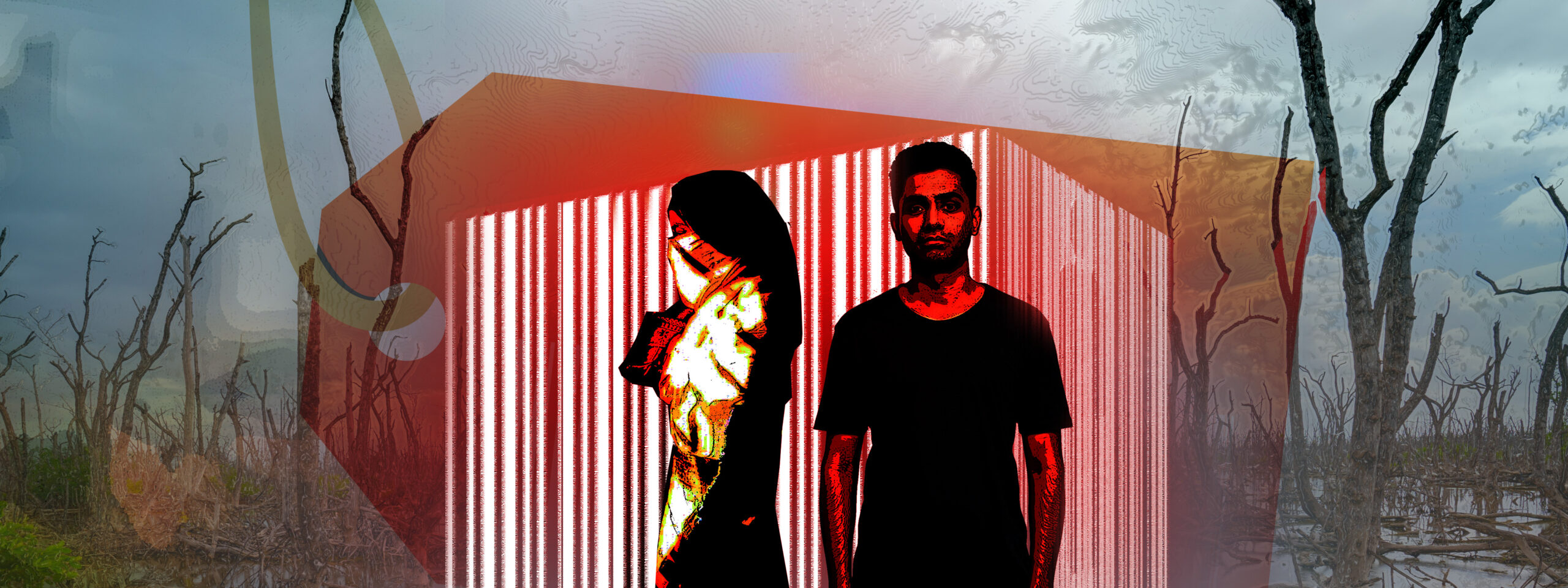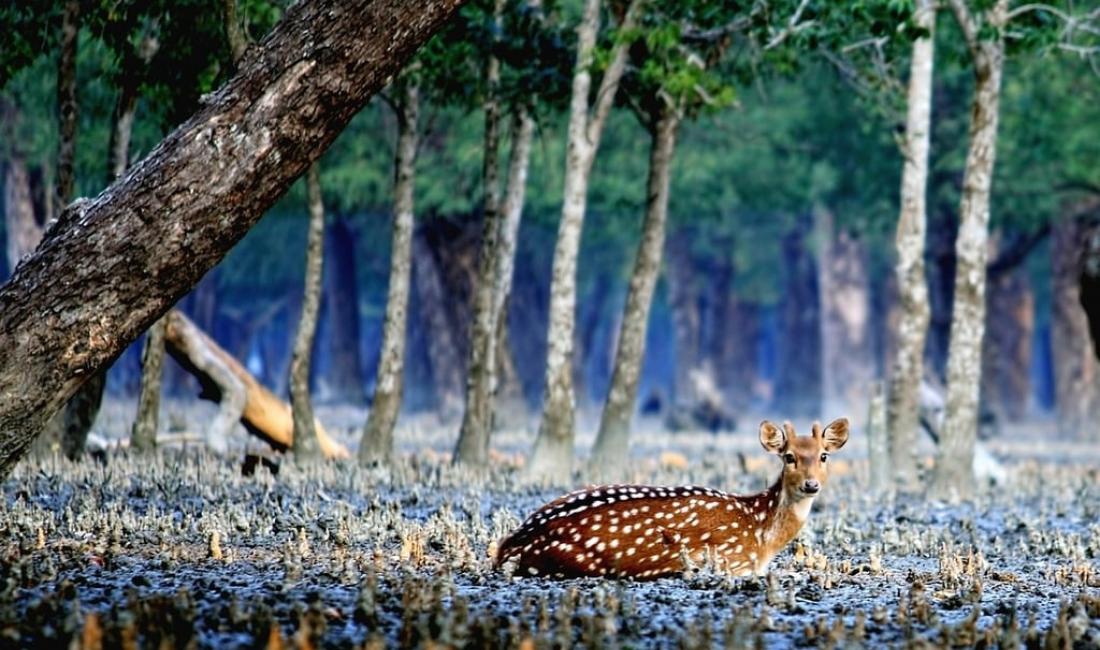In Towns and Villages of India's Mangrove Forest, Climate Change Spurs Trafficking
This piece was originally published by Asia Democracy Chronciles. Photo credit: Pixabay CC 1.0.
The solemn quiet in the Sundarbans mangrove forest, India’s last green rampart, reminded Akhter (not her real name) of the day her life unraveled five years ago.
“It was a quiet morning – [calm], cloudy, just like the one we’re seeing now,” she told Asia Democracy Chronicles (ADC). “But when we came back after a few days, there was nothing left. It looked like the sea, vast and empty, with nothing visible in the distance.”
Five years ago, Cyclone Amphan slammed into the Bay of Bengal with terrifying force, wiping out homes, fields, and entire villages across one of the largest mangrove forests in the world. Akhter’s family was left with nothing. A few days later, a distant relative offered her a way out: a job in the city, food, and a chance to help her family rebuild.
Desperate for hope, they agreed. “He showed sympathy for what had happened,” Akhter recalled. “[My family] thought I might even be able to send money home.”
But the promise turned out to be a lie. After a long train ride to Delhi, a few days after the relative’s visit, she was handed over to a stranger woman who then locked her in a “dim, suffocating room … When I asked where I was and where Uncle had gone, she laughed and said, ‘This is your home now. He’s not coming back.’”
As it turned out, Akhter, who goes by a single name, had been trafficked and sold to a brothel. It took more than a year — and a police raid — before she was rescued and reunited with her family.
Her experience illustrated how climate disasters were not only displacing communities but also creating pipelines to human trafficking. This is especially true for vulnerable regions like the Sundarbans, considered the world’s largest mangrove forest and which has long protected the coastal communities of both India and Bangladesh from violent cyclones.
As it turns out, traffickers have been exploiting the chaotic aftermath of disasters. According to a 2021 National Crime Records Bureau (NCRB) report, a staggering 90,113 girls were reported missing across India — or 247 every day. West Bengal, home to much of the Indian Sundarbans, recorded the highest number of missing girls at 13,278.
For survivors like Akhter, these aren’t just numbers; they represent lives disrupted, families uprooted, and dreams destroyed.
Hidden costs
The Sundarbans, a UNESCO World Heritage site, is a vast deltaic region formed by the confluence of the Ganges, Brahmaputra, and Meghna rivers. These collectively comprise the river basin that flows through Bangladesh, Bhutan, China, India, and Nepal, and converges in the Bay of Bengal.
The Sundarbans is renowned for its unique mangrove forests, which act as a natural barrier and mitigate the impacts of cyclones and tsunamis, thereby safeguarding the lives and livelihoods of millions inhabiting the coastal areas of India and Bangladesh. However, rising seas, powerful storms, and saltwater intrusions from the Bay of Bengal have devastated one of the world’s most fragile ecosystems, leaving many vulnerable.
A study of Cyclone Amphan, which caused an estimated economic loss of $14 billion across South Asia, found that it had caused the most damage out of the three most recent cyclones to hit the region, with the most mangrove loss (18.8 percent) along shorelines already eroding in the past few years.
A 2022 report by the International Institute for Environment and Development draws a direct line between climate change and human trafficking. As farmland disappears and families are forced out of their homes, false promises of work or education become traps for desperate people. This connection is rarely explored both in global discussions or national level policy frameworks, noted the International Organization for Migration (IOM).
“[T]here needs to be an acknowledgement that human trafficking can be an unintended but direct consequence when migration occurs in the absence of government support and management, after disasters or in the face of slow-onset events,” IOM said in a report.
In the Sundarbans, where poverty, displacement, and isolation converge, climate change is no longer just an environmental crisis; it’s a trafficking engine. Around 8,000 children have been trafficked across India since 2021, official data show, with the Sundarbans repeatedly flagged as a hotspot.
“In the Sundarbans, people once knew when to plant and harvest. But now, sudden floods and droughts have destroyed that rhythm. Families lose everything, and in desperation, girls are married off or sent to work, only to end up trafficked,” said Subhashree Raptan, programme manager of Goranbose Gram Bikas Kendra (GGBK), a non-governmental organization working on human trafficking in North 24 Parganas, a populous district in West Bengal, eastern India.
She cited a recent case in which a trafficker from Bangladesh posed as a groom, married a girl from the Sundarbans, and later sold her, his true identity revealed only during a police investigation.
“Traffickers have evolved their methods over the years, often exploiting moments of extreme vulnerability, especially in the aftermath of cyclones or floods, when families are desperate and most at risk,” Subhashree added.
A 2024 study by the International Labour Organization put global profits from trafficking and forced labor at $236 billion – a 37 percent increase from 2014. Asia remains a global hub, with India both a source and destination.
Meanwhile, according to a recent study published in Forests, an international journal, approximately 2.3 million people reside in the Bangladesh Sundarbans, with an average per capita income of $330, while the Indian Sundarbans is home to around 4.42 million people, whose average per capita income is notably lower at $185. This stark economic disparity further exacerbates the vulnerability of communities to exploitation.
Foregone dreams
Stories like Akhter’s are all too common on either side of the border.
In Satkhira, a city in southwestern Bangladesh, 16-year-old Sabina Khatoon (not her real name) once dreamed of becoming a police officer. “I wanted to be someone who could protect others, someone strong,” she recalled. “But even dreams cost money, and we never had any.”
Born into poverty, Sabina’s childhood was defined by daily struggle. Her father, a landless farm laborer, earned barely enough to feed his family. “We owned nothing, not even a small patch of land,” she said. “There were nights we ate just once, and that felt like a luxury.”
Her dreams dissolved after Cyclone Amphan leveled her home. Her father fell deep into debt. When he couldn’t repay, he was warned: Sabina would be taken as compensation. Terrified, he reached out to a relative in Kolkata, who turned out to be involved in a trafficking chain.
Sabina was smuggled across the border and forced into domestic labor. Today, she cares for a stranger’s child in a foreign city. Her dream of a uniform is suspended in the shadow of survival.
Her story, alongside those of others, is a sobering reminder of the cascading effects of climate change as extreme weather and environmental degradation destroy livelihoods and homes.
Much is needed to patch these gaps, but improved relief efforts could at least reduce the desperation that drives disaster-stricken people to accept risky offers.
For Benoy Peter, executive director of the Centre for Migration and Inclusive Development, a nonprofit championing the social inclusion of migrants in India, the crisis calls for more than disaster relief.
“Sundarbans is a climate-vulnerable area, where disasters are frequent,” he said. “We need to be proactive rather than reactive.”
He added that he has been advocating for “household-level vulnerability assessments not only for disaster preparedness but also to identify risks such as trafficking, livelihood loss, and forced relocation.”
He urges local governments to develop a household vulnerability index: factoring in caste, land access, and dependence on nature-based livelihoods to better direct support.
“We need to move beyond short-term evacuation plans,” he said. “That means identifying at-risk individuals, particularly women and girls vulnerable to trafficking, and acting early — through education, awareness, and safer migration pathways.”
For Akhter, the lingering mental and emotional scars from her harrowing experience are poignant reminders of her ordeal.
“People say awful things about me. I face constant stigma,” she said. “But what hurts even more is accepting what happened, the time I spent in that brothel. Sometimes, it still feels unreal. I can’t believe I made it out.”




